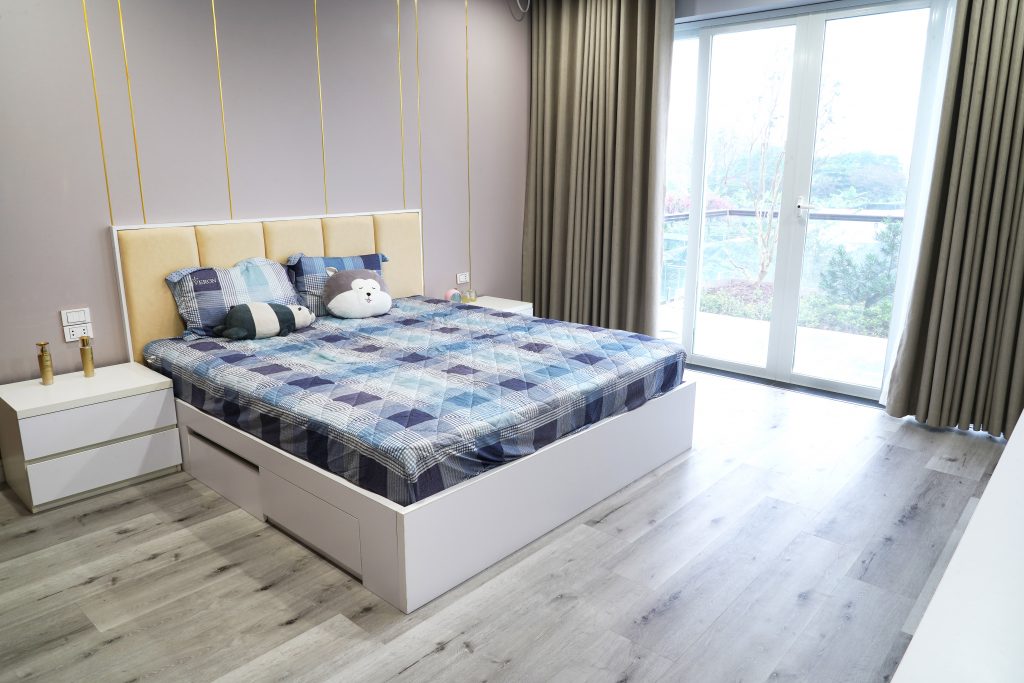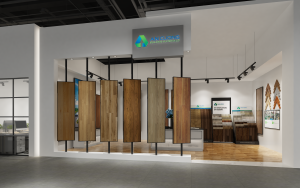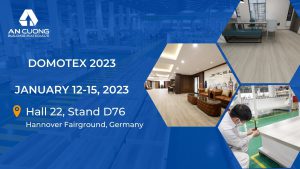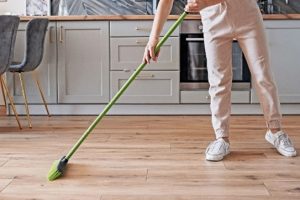Areas of the home that are damp, moist, or outright wet pose challenges for flooring, since so many flooring materials are susceptible to mold, rot, or mechanical breakdown of the materials when they are subjected to moisture.
Organic vs. Inorganic Materials
As a general rule, floor coverings made from inorganic materials, such as synthetic plastics, will be better than floorings that contain organic materials. The term organic technically refers to any material that is carbon-based and was once living, but when used to describe flooring materials, it usually refers to plant-based materials, such as solid wood, engineered wood, or bamboo, which is actually a grass. When subjected to moisture, organic materials will quickly begin to decompose, and they can soon become a host for a variety of molds and bacteria. Most inorganic materials, on the other hand, are products made from synthetically refined chemicals, and they are largely immune to the effects of moisture.
Not all flooring materials are fully organic or inorganic, of course, and the ratio of organics to inorganics will affect their ability to handle moisture.
Laminate Flooring has a synthetic surface that is fully 100 percent inorganic, but the thicker base layer on the flooring is usually fiberboard, made from wood fibers. Laminate flooring, therefore, is usually a poor choice for damp locations. Bamboo, on the other hand, is a fully organic material, but because bamboo flooring is made from a large ratio of synthetic resins and glues, it is actually relatively good at handling moisture when compared to inorganic plastic laminate flooring.
One exception to the rule is carpeting. Except for relatively rare wool and cotton carpet blends, most carpeting is synthetic and fully inorganic. But because carpeting traps and holds moisture, it is a very poor choice for damp locations.
Good Flooring Coverings for Damp/Wet Locations
All the floor coverings in this category provide excellent protection against moisture. All of the materials
themselves are 100 percent waterproof. These flooring coverings can be used with confidence in kitchens, full family bathrooms, and basements.
Porcelain tile:
Porcelain tile is a form of ceramic tile often used in showers, bathtubs, pools, and other pure-water areas. This material is highly resistant to intense water, thanks to the very fine clays and high firing temperatures used in its creation. Porcelain tile has a water absorption rate of 0.5 percent or less, defined by American Society for Testing and Materials (ASTM) C373. Porcelain tile is arguably the very best material for chronically damp locations, provided the grouted seams are maintained adequately. Cracked grout seams can provide an avenue for moisture to seep down into the subfloor.
Ceramic tile:
As with porcelain, ordinary ceramic tile is an excellent choice in areas that see puddling or standing water. The only difference is that non-porcelain ceramic tile has a slightly higher water absorption rate, though this is typically not an issue. As with porcelain, the weak point of ceramic tile is not the tile itself, but the grouted seams between the tiles.
Luxury vinyl SPC flooring:
Luxury SPC vinyl flooring (SPC flooring) comes n long plank strips, typically 7 inches wide and 48 inches long. The lock-and-fold style of joinery provides a fairly tight seal against water. The entire layer of flooring is entirely waterproof, including the core, making this a much better flooring for wet areas than plastic laminate flooring. Luxury vinyl ranks slightly behind sheet vinyl and ceramic tile because the seams between planks do sometimes allow water to seep to the subfloor, especially if the installation is less than perfect.

Acceptable Flooring Covering for Damp Locations
Floor coverings in this category are not made of 100 percent waterproof materials. However, the top surface is fully waterproof, and when tightly seamed, water can pool on the surface for short periods of time without harm.
Engineered wood:
Engineered wood performs better than laminate flooring because its base is of a sturdier, more water-resistant plywood material. Engineered wood will not stand up to long periods of standing water, but occasional puddling is not a problem. Manufacturers of engineered wood flooring may warranty their products against moisture damage but usually stipulate that spills and splashes need to be wiped up immediately. Like other floor coverings in this category, engineered wood is not a good choice where standing water is an ongoing likelihood.

Bamboo flooring:
Though bamboo flooring is made of organic material, the bamboo is heavily imbued with chemicals and resins that are water-resistant, though not waterproof.
Poor Flooring Covering for Damp or Wet Locations
The floor coverings in this category should not be used in wet areas at all. If installed, you do so at your own risk.
Solid hardwood (site-finished):
Solid hardwood flooring, particularly of the parquet or tongue-and-groove variety, will not work in below-grade environments such as basements. And it is strongly discouraged for bathrooms, where water is prevalent. Once hardwood floors become water-logged, it is possible to save them, but they will never be as good as new ones. Site-finished hardwood is slightly better against moisture than pre-finished wood flooring since the sealant fills the seams and provides protection against water seeping to the subfloor.
Solid hardwood (pre-finished):
Pre-finished flooring that is factory stained and finished has all the disadvantages of solid hardwood and is even more susceptible to moisture penetrating between the boards since there was no liquid layer of finish applied to fill the seams after installation. Further, the edges of pre-finished hardwood often are beveled, which can actually channel water into the seams.
Carpeting:
It is simply a bad idea to install carpeting in bathrooms and other wet places. Once wet, carpet dries out very slowly, promoting mold and mildew growth. Carpeting made from synthetic materials such as olefin and polyester is only slightly better than wool in damp areas. Generally, no matter what type of material the carpeting is made from, do not install it in wet or even semi-wet areas. If carpeting in a basement is absolutely needed, it should be elevated off the slab floor by using a raised subfloor of sleepers and plywood differnt.









